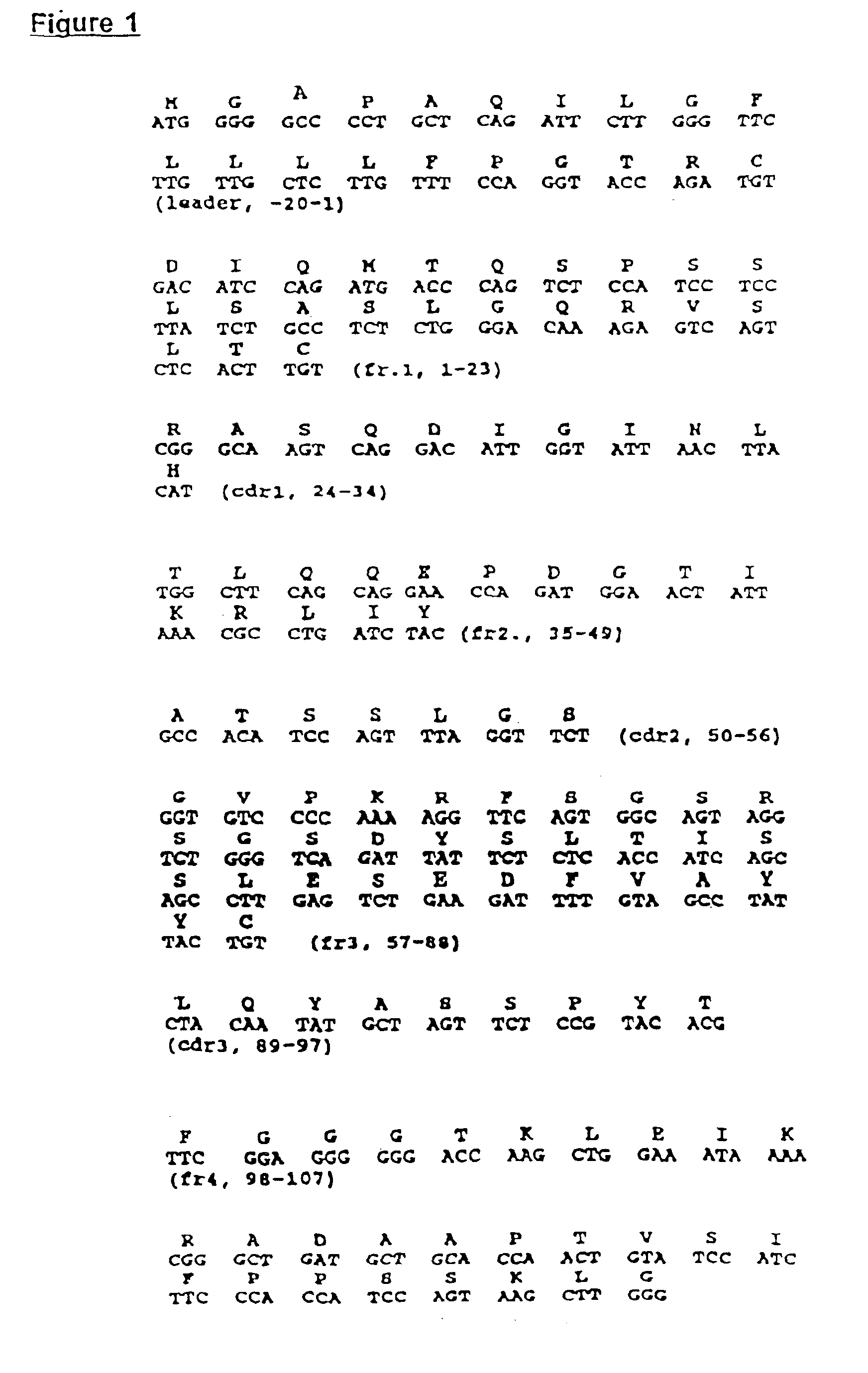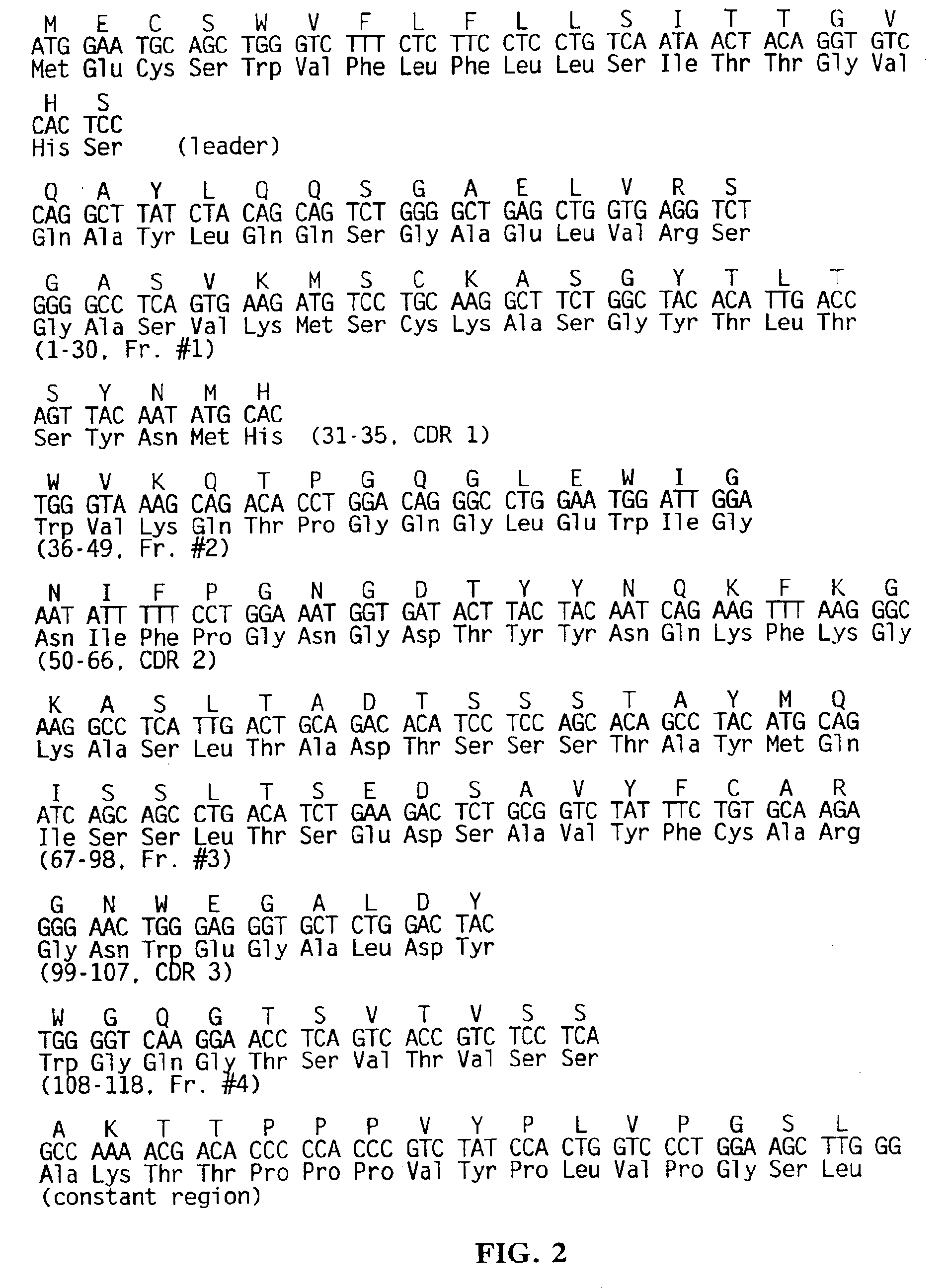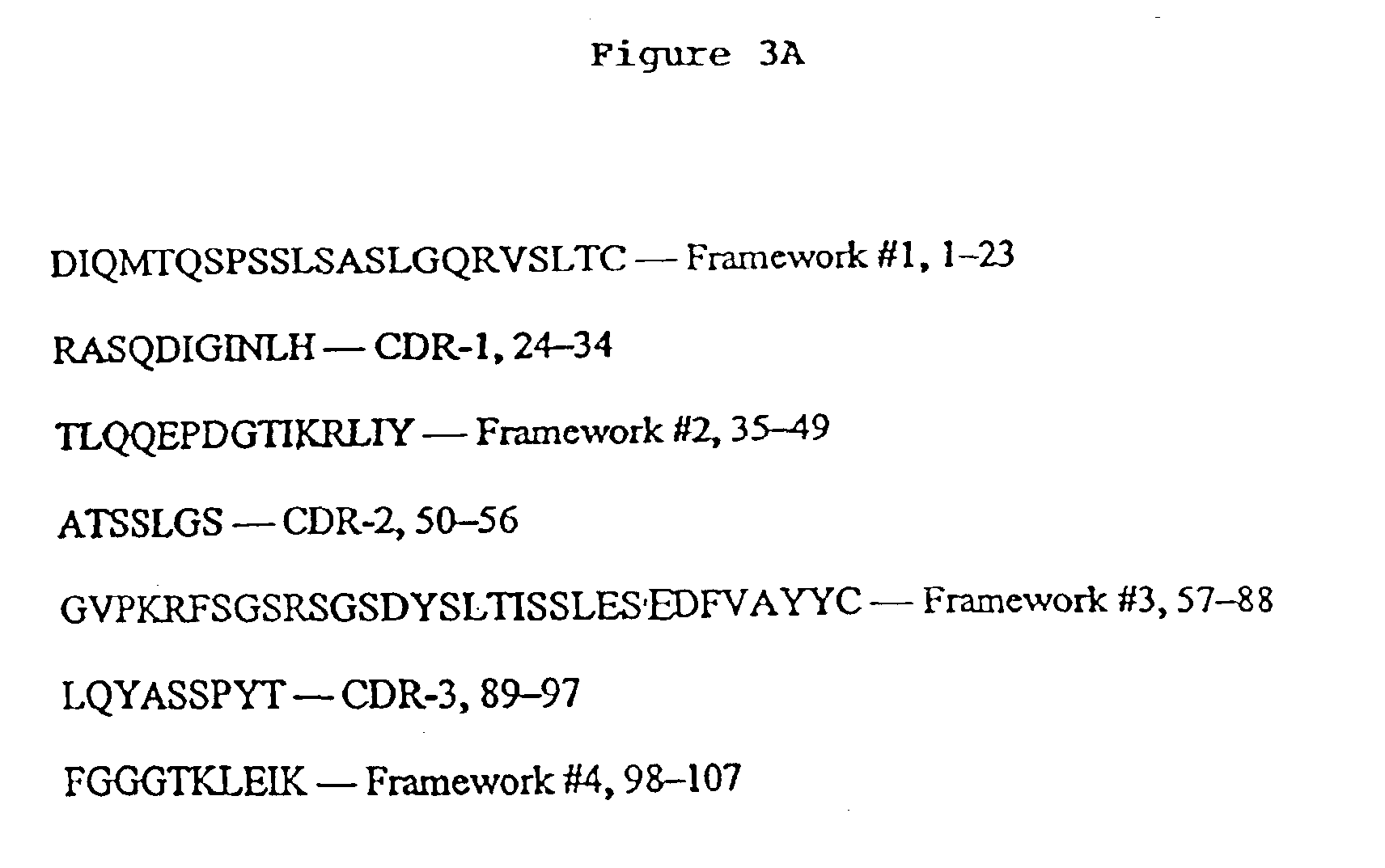Polynucleotides related to murine anti-idiotype antibody 11D10 and methods of use thereof
a technology of polynucleotide and anti-idiotype antibody, which is applied in the field of monoclonal anti-idiotype antibody 11d10 and polynucleotide and polypeptide sequence, can solve the problems of solid tumors, cancer deaths in women, and still a significant failure ra
- Summary
- Abstract
- Description
- Claims
- Application Information
AI Technical Summary
Benefits of technology
Problems solved by technology
Method used
Image
Examples
example 1
Generation and Characterization of 11D10 Anti-Idiotype Antibody
[0322]The hybridoma cell line producing monoclonal anti-idiotype antibody 11D10 was created and identified according to the following description. Aspects of both the immunization procedure and the screening procedure were important to obtain an antibody with the desired specificity and functionality. 11D10 was one of a number of Ab2 that were initially produced, and was identified as the candidate with the most desirable features.
[0323]The immunizing antibody (Ab1) was the mouse anti-HMFG monoclonal antibody MC-10, referred to in this section as BrE-1. Since the responding animal was also a mouse, the Ab2 generated were expected to be directed against idiotypic features of BrE-1. However, only a fraction of those would be directed against the BrE-1 paratope, an even smaller proportion would be immunogenic and capable of eliciting an Ab3, and a still smaller proportion would elicit Ab3 that cross-reacted with the tumor-a...
example 2
Cloning and Sequencing of 11D10 cDNA
[0371]Unless otherwise specified, all cloning techniques were essentially as described by Sambrook et al. (1989) and all reagents were used according to the manufacturer's directions.
[0372]The polynucleotide sequence was obtained for the 11D10 antibody by isolating messenger RNA from the 11D10 producing cell line. For each sequence determination, total RNA was isolated from 1×107 11D10 hybridoma cells. Messenger RNA was prepared by passage through two cycles of chromatography of oligothymidylate-cellulose columns. The yield of mRNA was about 100 μg. First strand cDNA was synthesized using SuperScript Preamplification kit (GIBCO / BRL).
[0373]To sequence the heavy chain variable region, PCRs were conducted on the cDNA using a reverse (3′) primer corresponding to amino acids 126 to 119 of the murine γ1 constant region:
5′-CCCAAGCTTCCAGGGRCCARKGGATARACIGRTGG-3′ (SEQ ID NO:36)
and various mixtures of forward primers, corresponding to the N-terminal leader ...
example 3
Induction of a Breast Cancer Specific Response by 11D10 in Monkeys
Cell Lines
[0403]The human breast carcinoma cell line MCF-7, which expresses HMFG antigen, was grown in RMP1 1640 medium supplemented with 10% FCS, 1% L-glutamine, penicillin, and streptomycin, and was used for the detection of antitumor responses. The human melanoma cell line M21 / P6 (kindly provided by Dr. Ralph Reisteid, Scripps Research Institute, La Jolla, Calif.) and the T-cell line MOLT-4, both of which are HMFG negative, were grown in the same medium and were used as negative controls.
Antibodies
[0404]The Ab1 mAb MC-10 (IgG2b, κ), which recognizes a distinct and specific epitope on the MW400,000 HMFG molecule, was used to immunize syngeneic BALB / c mice for the production of anti-Id mAb 11D10 (IgG1-κ), as described in Example 1. The mAb2 3H1 (IgG1-κ) is a murine anti-Id mAb which is related to the human CEA (Bhattacharya-Chatterjee et al. (1990) J. Immunol. 14S:Z758-2765) and was used as a control.
[0405]To...
PUM
 Login to View More
Login to View More Abstract
Description
Claims
Application Information
 Login to View More
Login to View More - R&D
- Intellectual Property
- Life Sciences
- Materials
- Tech Scout
- Unparalleled Data Quality
- Higher Quality Content
- 60% Fewer Hallucinations
Browse by: Latest US Patents, China's latest patents, Technical Efficacy Thesaurus, Application Domain, Technology Topic, Popular Technical Reports.
© 2025 PatSnap. All rights reserved.Legal|Privacy policy|Modern Slavery Act Transparency Statement|Sitemap|About US| Contact US: help@patsnap.com



